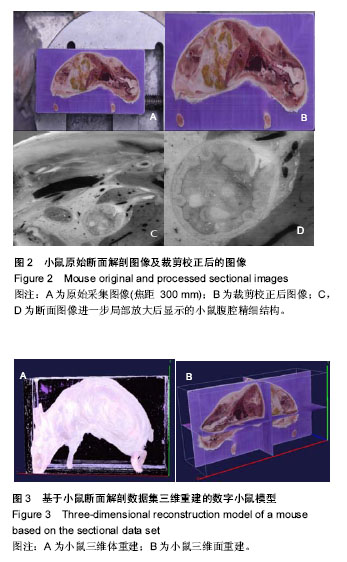| [1] 管俊杰. 数字化导航辅助颈椎椎弓根螺钉置入提高置钉准确率及安全性:随机对照临床试验方案[J]. 中国组织工程研究, 2016, 20(39):5898-5903.[2] 陈宣煌,吴献伟,林海滨,等. 胫骨近端骨折内固定数字化设计对临床修复治疗的指导[J]. 中国组织工程研究, 2015,19(39): 6366-6372.[3] 刘宏滨,赵汉青,史跃,等. 股骨头坏死区三维数字化模型建立及体积估算[J]. 中国组织工程研究, 2016,20(44):6629-6635.[4] 张志峰,赵振群,黄健,等. 汉族与蒙古族胫骨近端部分数字化解剖形态的测量与对比[J]. 中国组织工程研究, 2015,19(53): 8627-8632.[5] 陈宣煌,张国栋,吴长福,等. 基于3D打印齿状突空心钉置入的数字化导航(英文)[J]. 中国组织工程研究, 2015,19(35):5697- 5704.[6] 陈旭,余正希,陈宣煌,等. 3D打印数字化导航模块辅助股骨颈中空拉力螺钉的精准置入[J]. 中国组织工程研究, 2016,20(53): 7979-7984.[7] 郑锋,余正希,陈宣煌,等. 基于数字化设计和3D打印胫骨近端骨折内固定的关键技术[J]. 中国组织工程研究, 2016,20(26): 3837-3842.[8] Breda A, Territo A, Gausa L, et al. Robotic kidney transplantation: one year after the beginning. World J Urol. 2017 Feb 22. [9] Jensen J S, Antonsen H K, Durup J. Two years of experience with robot-assisted anti-reflux surgery: A retrospective cohort study. Int J Surg.2017;39:260-266.[10] 张剑,杨晓梅,高建刚. 小鼠基因敲除的研究进展[J]. 山东大学学报:理学版,2011,46(10):183-196.[11] 李昊,郭晓莲,唐智伟,等. 基于X射线的小动物成像micro-CT系统[J]. 清华大学学报:自然科学版,2009,49(6):900-903.[12] Dogdas B, Stout D, Chatziioannou A F, et al. Digimouse: a 3D whole body mouse atlas from CT and cryosection data. Phys Med Biol.2007;52(3):577-587.[13] Dhenain M, Ruffins S W, Jacobs R E. Three-dimensional digital mouse atlas using high-resolution MRI. Dev Biol.2001; 232(2):458-470.[14] Teutsch H F, Schuerfeld D, Groezinger E. Three-dimensional reconstruction of parenchymal units in the liver of the rat. Hepatology.1999;29(2):494-505.[15] 符锋,赵明亮,李晓红,等. MRI-三维重建动态测量颅脑创伤模型大鼠的空腔变化[J]. 中国组织工程研究,2016,20(40): 5946-5952.[16] 赵媛媛,周果宏,高殿帅,等. 基于3D Slicer的成年大鼠侧脑室外侧壁脑室下区全部细胞核的三维重建[J]. 中国生物医学工程学报,2004,23(6):589-592.[17] 许晴,魏华,李华,等. 应用超高分辨力小动物超声影像系统三维重建技术测量严重联合免疫缺陷小鼠卵巢体积[J]. 中国医学影像技术,2014,39(2):185-188.[18] 张璐,李冬月,石宏理,等. 小鼠肝脏样本在不同状态下的相位衬度成像及三维重建[J]. 中国医疗器械杂志,2010,34(2):86-88.[19] 彭佳华,王维平,刘江辉,等. 三维重建胫骨前肌在评估两种压力模式对大鼠深部组织损伤中的应用[J]. 中国修复重建外科杂志,2011,25(4):436-441.[20] Kawamoto T. Use of a new adhesive film for the preparation of multi-purpose fresh-frozen sections from hard tissues, whole-animals, insects and plants. Arch Histol Cytol.2003; 66(2):123-143.[21] Kawamoto T, Shimizu M. A method for preparing 2- to 50-micron-thick fresh-frozen sections of large samples and undecalcified hard tissues. Histochem Cell Biol.2000; 113(5): 331-339.[22] Bemenderfer T B, Harris J S, Condon K W, et al. Tips and techniques for processing and sectioning undecalcified murine bone specimens. Methods Mol Biol.2014;1130: 123-147.[23] Kawamoto T, Kawamoto K. Preparation of thin frozen sections from nonfixed and undecalcified hard tissues using Kawamot's film method (2012). Methods Mol Biol.2014;1130: 149-164.[24] 李云生,田德润,于春水,等. 火棉胶包埋法在制作断层解剖学标本上的应用[J]. 中国临床解剖学杂志,2000,18(1):91.[25] 徐金操,刘会占,刘思然,等. 耳蜗火棉胶包埋冰冻切片技术的应用[J]. 中华耳科学杂志,2012,10(1):105-107.[26] 张苏,陈永珍,朱旻. 改良的火棉胶切片技术[J]. 解剖学杂志, 2007(02):255-260.[27] 戴培东,张天宇,王正敏,等. 颞骨不脱钙连续大薄切片制作方法[J]. 中国眼耳鼻喉科杂志,2005,5(6):382-383.[28] Mack SA, Maltby KM, Hilton MJ. Demineralized murine skeletal histology. Methods Mol Biol.2014;1130:165-183.[29] 罗洪艳,杨维萍,李恺,等. 数字小鼠切片数据集的自动配准[J]. 中国医学影像技术,2009,34(11):2122-2125.[30] Zhang SX, Heng PA, Liu ZJ, et al. Creation of the Chinese visible human data set. Anat Rec B New Anat,2003; 275(1): 190-195.[31] 余时伟,黄廷祝,刘晓云,等. 显著图引导下基于偏互信息的医学图像配准[J]. 仪器仪表学报,2013,34(6):19-26.[32] 查珊珊,王远军,聂生东. 基于图形处理器加速的医学图像配准技术进展[J]. 计算机应用,2015,35(9):2486-2491.[33] 刘刚战,刘楷正. 医学图像三维重建技术的研究与应用[J]. 通讯世界,2016,(9):279.[34] 马旋,薛原,杨若瑜. 基于Kinect的人体实时三维重建及其应用[J]. 计算机辅助设计与图形学学报,2014,26(10):1720-1726.[35] 于颖,聂生东. 医学图像配准技术及其研究进展[J]. 中国医学物理学杂志,2009,26(6):1485-1489.[36] 赵海峰,陆明,卜令斌,等. 基于特征点Rényi互信息的医学图像配准[J]. 计算机学报,2015,38(6):1212-1221.[37] 卢振泰,张娟,冯前进,等. 基于局部方差与残差复杂性的医学图像配准[J]. 计算机学报,2015,38(12):2400-2411.[38] 王红玉,冯筠,崔磊,等. 应用显著纹理特征的医学图像配准[J]. 光学精密工程,2015,23(9):2656-2665.[39] 郑亚琴,田心. 医学图像配准技术研究进展[J]. 国际生物医学工程杂志,2006,29(2):88-92.[40] 于佳,于国华,陆丹. 医学图像配准技术研究进展[J]. 计算机与数字工程,2009,37(10):132-134.[41] 李艳娟,陈冬,仉俊峰,等. 基于PSO和互信息的小波医学图像配准及融合[J]. 黑龙江工程学院学报,2015,29(5):46-51.[42] 黄剑峰,廖建敏. 基于最大互信息的CT/MRI脑部医学图像配准及融合[J]. 轻工科技,2015,(11):67-68.[43] 赵海峰,陆明,卜令斌,等. 基于特征点Rényi互信息的医学图像配准[J]. 计算机学报,2015,38(06):1212-1221.[44] 王灿进,孙涛,王锐,等. 基于彩色二进制局部不变特征的图像配准[J]. 中国激光,2015,42(1):268-276.[45] 吴泽鹏,郭玲玲,朱明超,等. 结合图像信息熵和特征点的图像配准方法[J]. 红外与激光工程,2013,42(10):2846-2852.[46] 曹雷,刘文芳,周宇宁,等. 大鼠肾标本连续切片的三维重建及形态学测量[J]. 解剖学报,2010,41(3):462-468.[47] Ma B, Wang L, von Wasielewski R, et al. Serial sectioning and three-dimensional reconstruction of mouse Peyer's patch. Micron.2008;39(7):967-975.[48] Gargesha M, Qutaish M, Roy D, et al. Enhanced Volume Rendering Techniques for High-Resolution Color Cryo-Imaging Data. Proc SPIE Int Soc Opt Eng.2009; 7262: 72655V.[49] Handschuh S, Schwaha T, Metscher B D. Showing their true colors: a practical approach to volume rendering from serial sections. BMC Dev Biol.2010;10:41.[50] Kahrs LA, Labadie RF. Virtual exploration and comparison of linear mastoid drilling trajectories with true-color volume rendering and the visible ear dataset. Stud Health Technol Inform.2013;184:215-221.[51] Kahrs LA, Labadie RF. Freely-available, true-color volume rendering software and cryohistology data sets for virtual exploration of the temporal bone anatomy. ORL J Otorhinolaryngol Relat Spec.2013;75(1):46-53.[52] Gargesha M, Qutaish MQ, Roy D, et al. Visualization of color anatomy and molecular fluorescence in whole-mouse cryo-imaging. Comput Med Imaging Graph.2011;35(3): 195-205. |
.jpg)

.jpg)
.jpg)